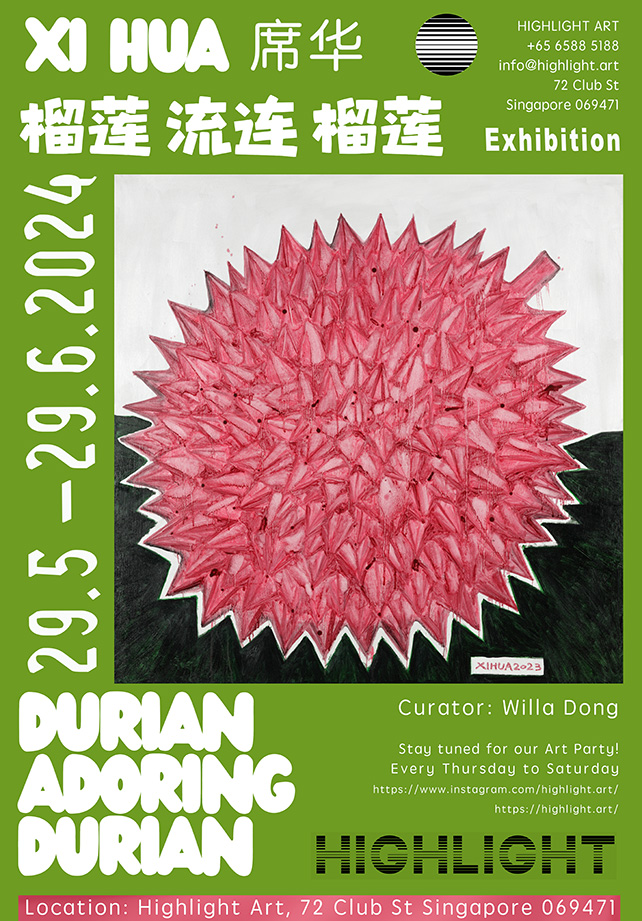
Xi Hua, an artist from Guilin, has always struck me as someone who maintains a deliberate distance from mainstream art, positioning himself on the margins and in an alternative space. Mainstream art, in this context, encompasses both the official narratives that emphasize art’s didactic functions and the singular dominance of “Guilin ink painting is the best in the world.” This impression stems from Xi Hua’s steadfast adherence to artistic autonomy and independence, even while working in news media. He consistently pursues imaginative and independent artistic creation, which sets him apart from other Guilin artists, making his endeavors all the more commendable.
Xi Hua’s studio is located in a disused textile factory’s red-brick water tower in the southern suburbs of Guilin. He is the only contemporary artist amidst this industrial wasteland. Within the twenty-meter-high circular water tower, Xi Hua has crafted a bizarre, magical world. He collects an array of discarded objects—old machines, aluminum sheets, tiles, furniture—and repurposes these fragmented items into fantastical installations and mixed-media paintings. These installations not only evoke memories of past eras and Xi Hua’s lived experiences but also reflect his life in Guilin—a cold, heavy fortress symbolizing his isolation and disconnection from his surroundings. Some works, like the series “City·Breath” and “Human Planet·Nest,” use exaggerated and distorted forms to create a surreal visual language. These pieces drift, fragmented and unanchored, hinting at future planetary pollution. The urban dwellers, caught between demolition and construction, find little spiritual solace or value, rendering them homeless and adrift—a recurring texture in Xi Hua’s urban works. Xi Hua emphasizes that his works address varied cities beyond just his own, embodying a questioning, reflective, and critical stance. For perceptive viewers, these encounters compel serious contemplation of contemporary cultural specifics and the anomalies of urbanization.
Xi Hua’s interest in the possibilities and absurdities of surrealism intertwines time-worn, fragmented objects and figures in bizarre ways, as seen in works like “Mask,” “Garbled Code,” and “Lander.” His representation blends the tangible with the fantastical, creating a scene that blurs reality and illusion, transforming urban life into a demonized dramatic stage. This silent commentary suggests that everything in urban life is beyond our control, governed by an invisible hand, leaving us helpless and fragile. This harshly dismantles the myths of modernization and the utopian aspirations in people’s consciousness. Xi Hua’s exaggerated, distorted urban scenes do not detach from our everyday urban experiences but rather emphasize his critical view of modernization’s drawbacks prevalent since the 90s till today, ultimately expressing a longing for a habitable environment where humanity does not fall into moral decay amidst material abundance.
Xi Hua’s paintings, which focus on a magical realism, unveil the illusory aspects of a fantastical city. This reveals the power of artistic expression and, relatedly, the linguistic strength inherent in Xi Hua’s painting technique. The subjects he portrays are often filled with images of darkness, pain, screams, abysses, and fragmented scenes. His brushstrokes delve deep into the souls of somnambulistic individuals, revealing the impacts of societal transformation on human nature, psychology, and the subconscious, especially the distorted humanity under the corrosion of material desires. Perhaps it is the critique and backlash against the myriad drawbacks and ugliness caused by modern cities and civilizations that imbue his works with a certain ferocity. It seems that only within these grotesque, twisted, deformed images can one touch upon the true state of urban life and the solace of the soul. Rather than a manifestation of Xi Hua’s profound humanistic and moral concerns, it is more a reflection of his unresolved intellectual “complex.” Therefore, in interpreting these works, we can genuinely perceive the artist Xi Hua’s fundamental stance towards reality and art, as well as his fragmented passion. This is not only worthy of attention and respect but perhaps is also an indispensable artistic quality and social responsibility for every contemporary artist.
Xi Hua’s art, characterized by this blend of mainstream and marginal perspectives, thrives on the dialogue and intervention from the margins. Art’s inherent nature, akin to dreams, separates it from reality, offering viewers an abstract connection to the real world. Through the artist’s imagination and fictional constructs, viewers find inspiration and release, entering a detached, lighter world—a refuge from the burdens of reality, much like Xi Hua’s dedicated solitude in his towering studio.
Venue: Highlight Art, 72 Club St, Singapore 069471
When: 29 May - 29 Jun 2024,
By: Highlight Art






